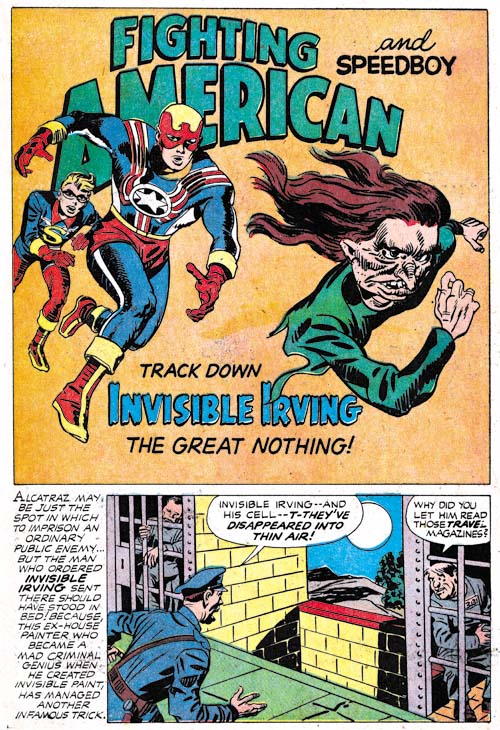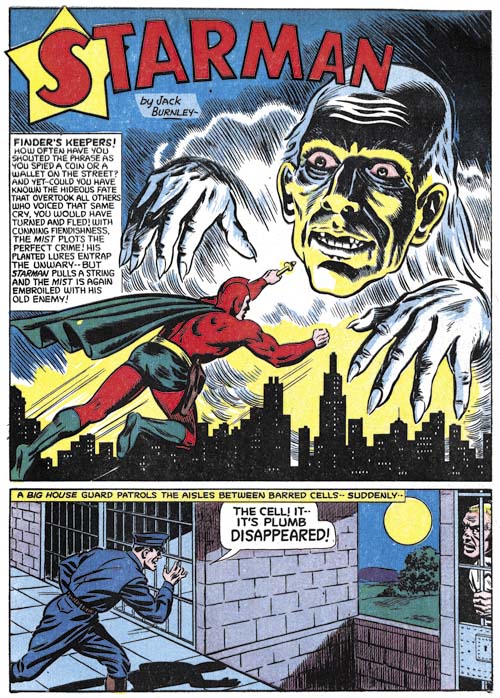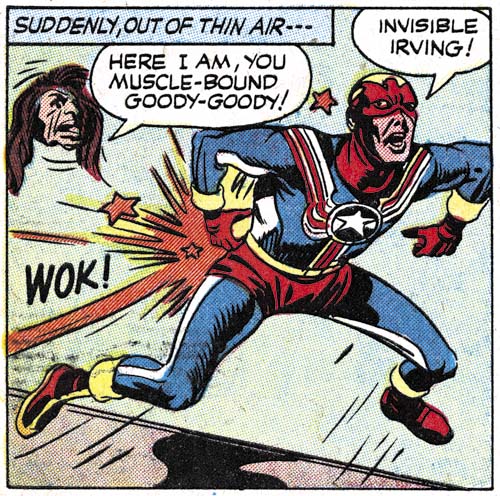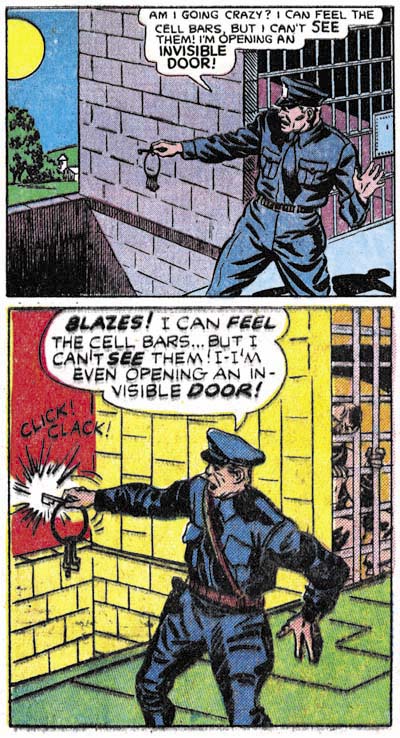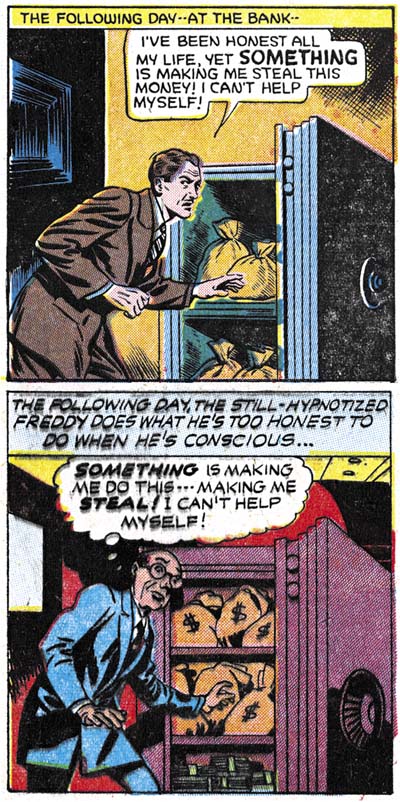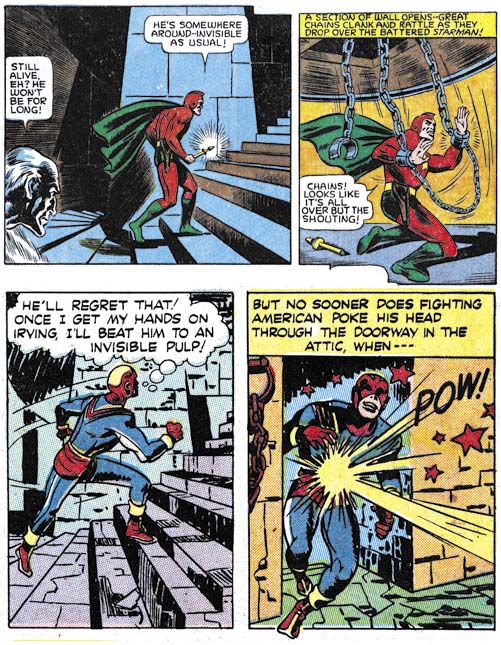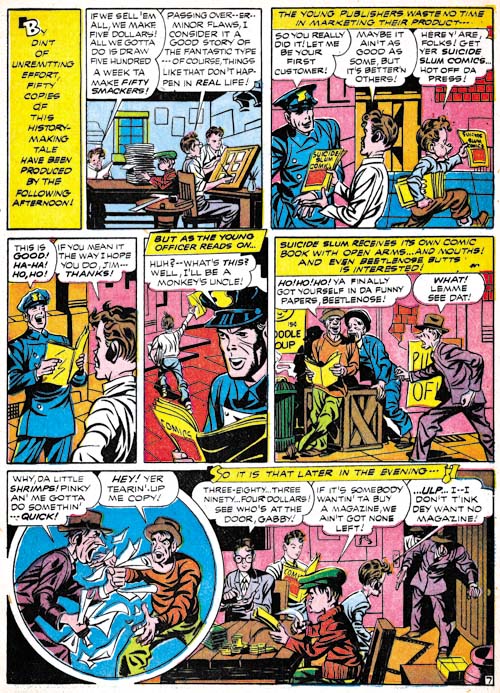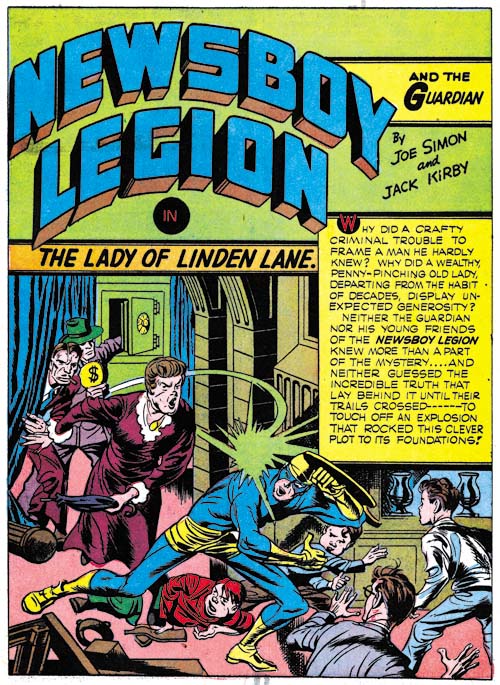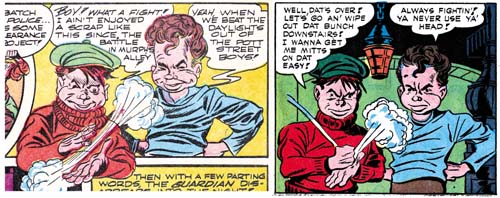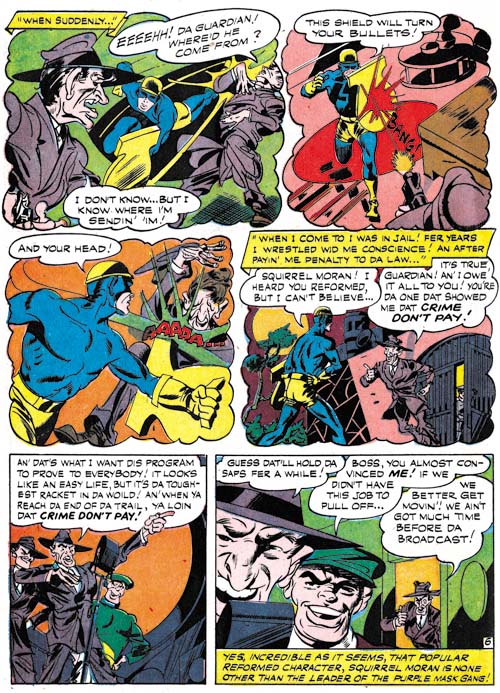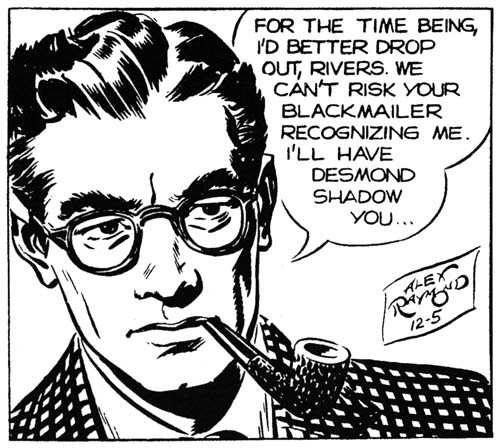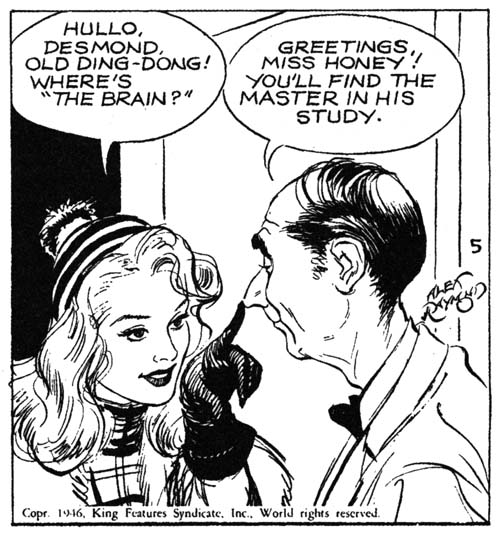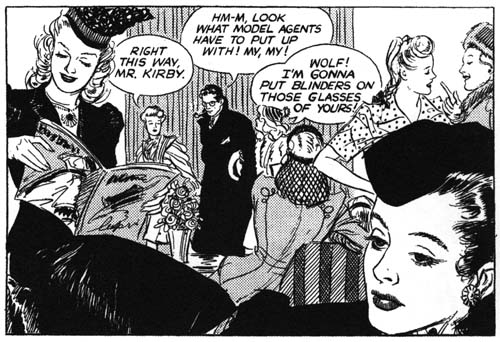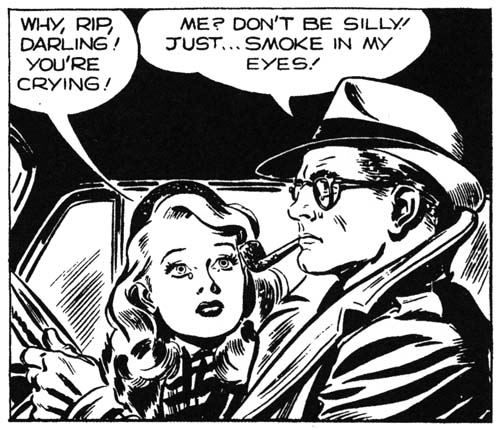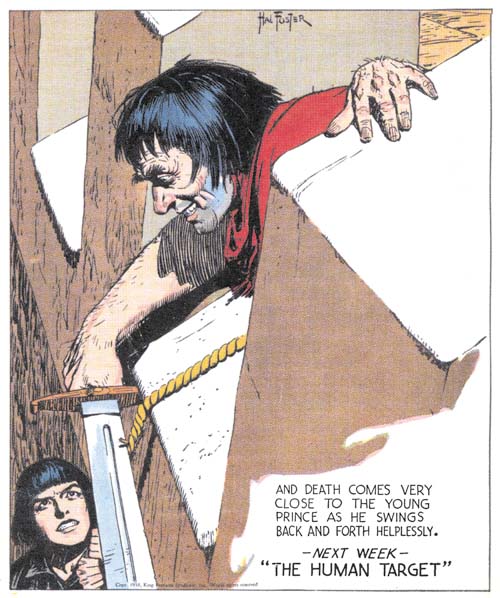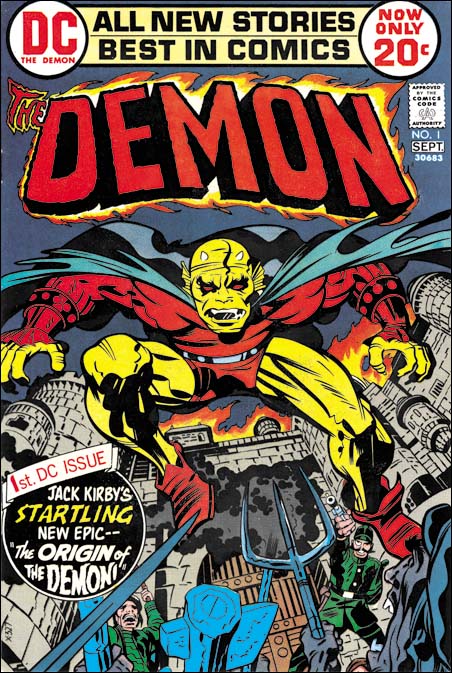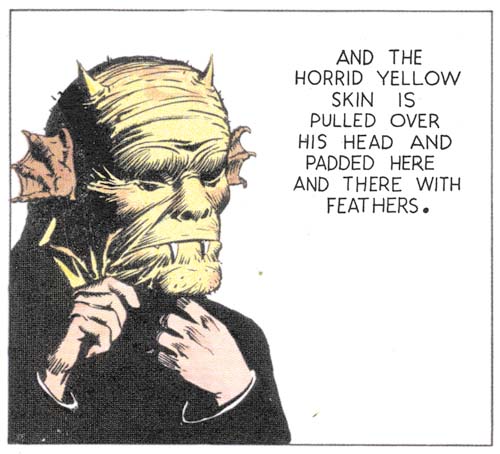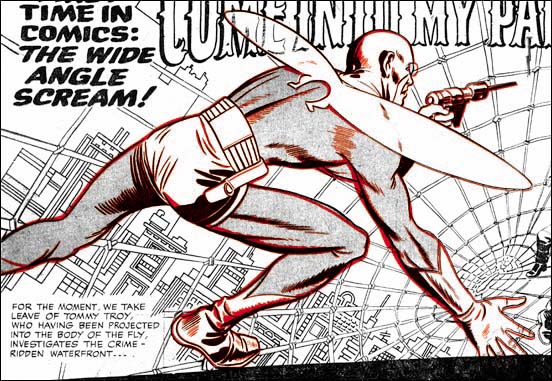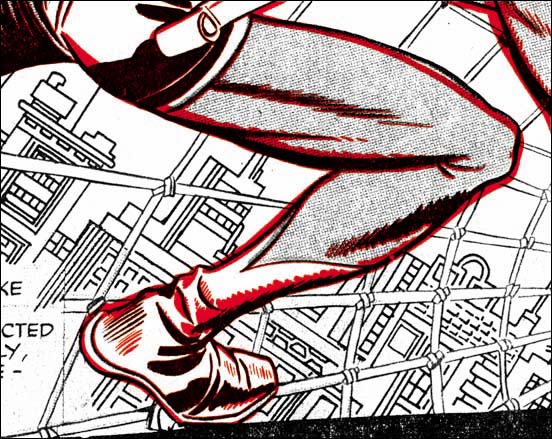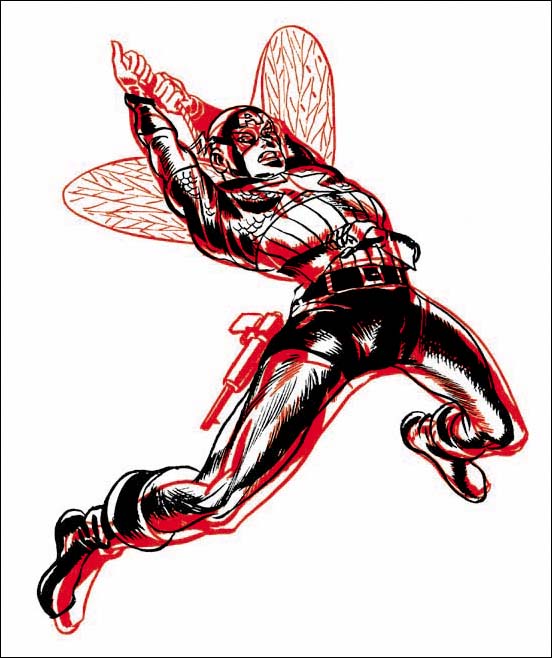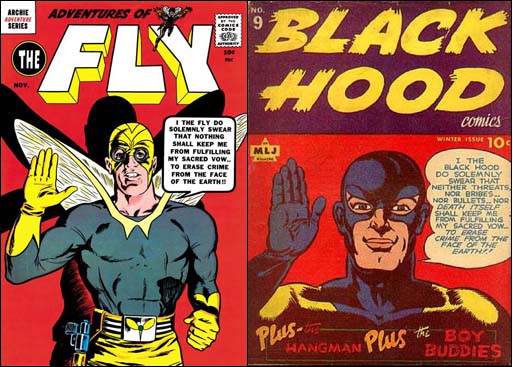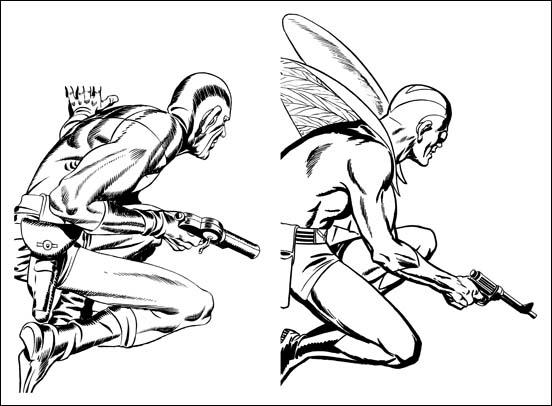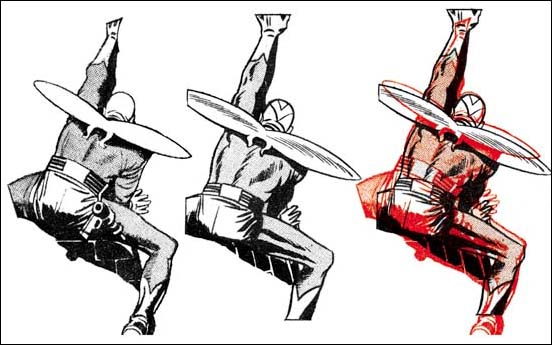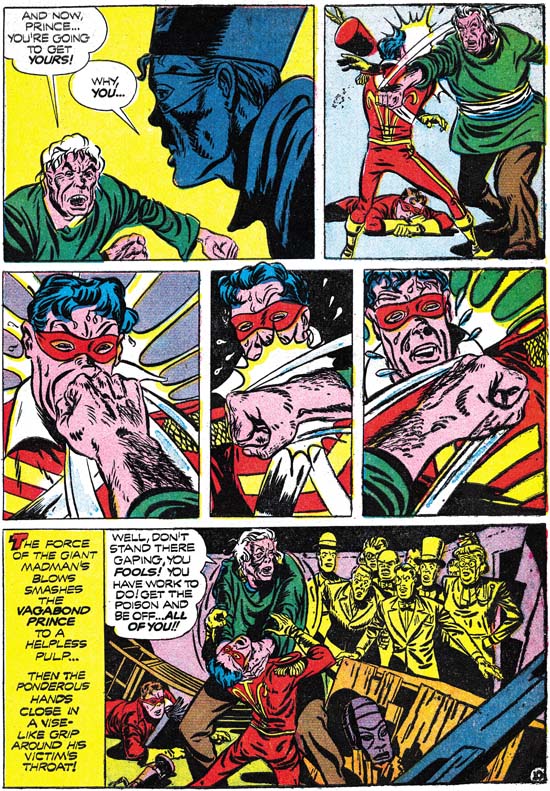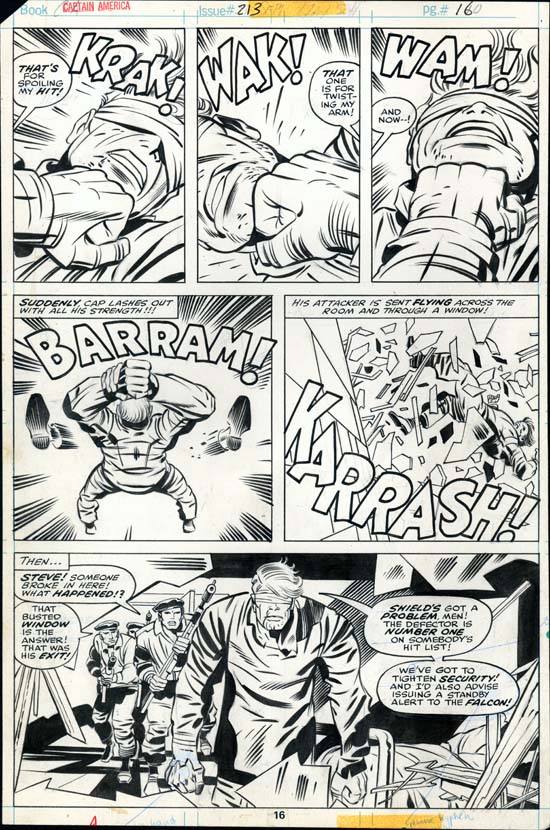The most certain way of spotting a comic book swipe* is, of course, to find the earlier version that from which it was swiped. But it is possible to recognize a swipe even when the original has not yet been found. Deviations in art style or level of detail in the art is one method that can be used to suggest that swiping has been used. Repetition of a particular image is another.
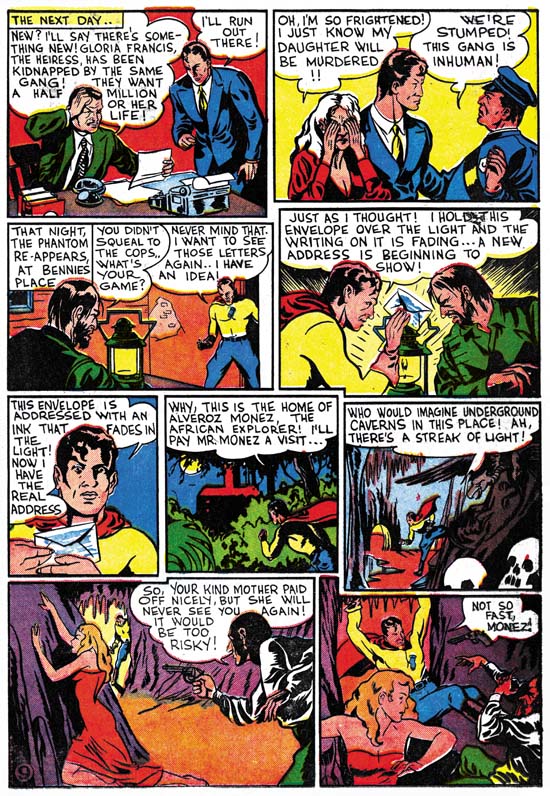
Daring Mystery #2 (February 1940) “Phantom Bullet” page 9, pencils, inks and letters by Joe Simon
An early assignment for Joe Simon (released only one month after his earliest published work) was “Phantom Bullet” for Timely Comics. Note the despairing female in the second to last panel from page 9. Actually there is little in the art to suggest that this is might be a swipe. Perhaps only that the woman’s pose seems not to match very well to the action. However such a defect could easily be excused since Simon had just begun to learn his trade as a comic book artist. His previous experience as a staff artist for a newspaper did not overly prepare him for the special requirements of sequential art.
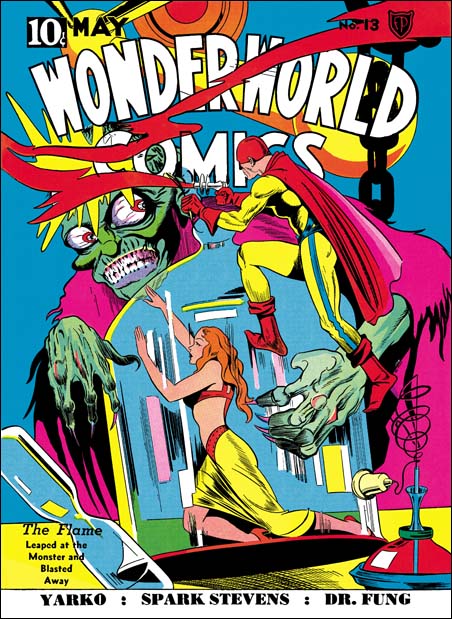
Wonderworld Comics #13 (May 1940), pencils and inks by Joe Simon
When Simon became editor for Fox Comics he would draw the cover art. The same damsel in distress shows up on the cover of Wonderworld #13. The Wonderworld figure is a close match for the one in Phantom Bullet but by no means identical.

Flash Gordon (February 4, 1934), art by Alex Raymond
So at this point nearly the same figure appears on two occasions. While this is not proof that the figure was swiped it certainly is strongly suggestive that it was. The proof came when I recently noticed a panel shown above from the newspaper syndication strip Flash Gordon. Simon was a big fan of Raymond’s Flash Gordon (as well as Hal Foster’s Prince Valiant). Other swipes by Simon from Flash Gordon have been previously reported (Art by Joe Simon, Chapter 4, Footnote) so the fact that Raymond is the source of the female figure is not totally unexpected. Still it is nice to have confirmation on a swipe that was already expected based on its repeated use. The biggest surprise is that date of the Raymond original, February 1934, six years prior to Simon’s swipe. It is possible that Simon and kept a copy over the years but it is also possible that he had picked up a reprint book. Raymond’s Flash Gordon was very popular at the time and reprints the publisher Whitman had released at least one volume in 1940.

Wonderworld Comics #13 (May 1940) art by Joe Simon
Flash Gordon (February 4, 1934) art by Alex Raymond
Daring Mystery #2 (February 1940) art by Joe Simon
Above I have scaled the figures to the same dimensions for an earlier comparison. It can be seen how much of the damsel in the Wonderworld #13 cover was copied from Flash Gordon. Even much of the detailing of the folds and shadows of the woman’s dress are shared between the two. Not surprisingly the figure from the Phantom Bullet panel has less details but even in it some of the folds of the dress were copied from Raymond’s work. While the similarity of both of Simon’s version to the Flash Gordon original are too close for anything other than swiping, they are not so close to suggest anything other than a hand drawn copy. There was a time on the defunct Kirby-list where some claimed Simon used a copying device such as an overhead projector. They may all seem very similar but when I tried to overlay one drawing over another there were so many differences that the resulting overlay was too confusing. As an example compare the female’s buttocks. They are much longer in the two drawings by Simon than they are in the Raymond original. Such mistakes would are quite typical of hand drawn copies but would not be expected to be found in a copy made with the aid of a mechanical or optical device.
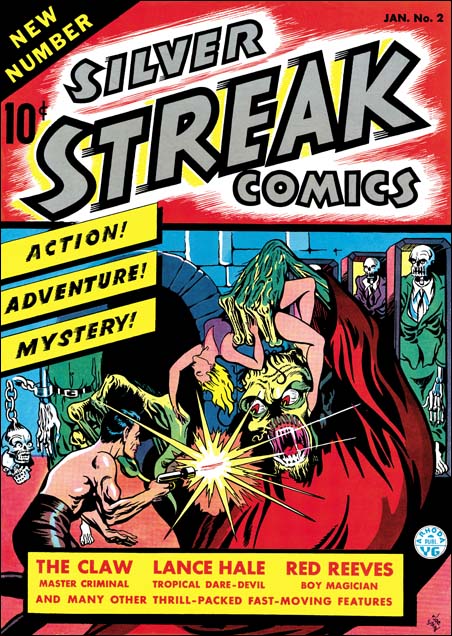
Silver Streak #2 (January 1940), pencils and inks by Joe Simon
One of the first pieces of comic book art that Joe Simon ever did was the cover for Silver Streak #2 (January 1940). One can question the anatomical accuracy but nonetheless it is a great cover full of energy and interest. Again by itself there is nothing in the cover art that glaringly suggests the use of swipes. However familiarity with Simon’s art style suggests that the gun firing hero might, just might, be a swipe because of the amount of detail provided for the anatomy.
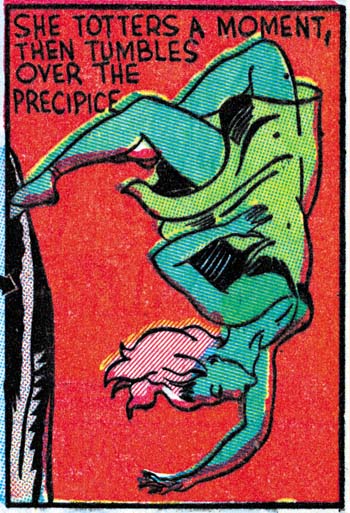
Blue Bolt #1 (June 1940) “The Human Lighting Streak” panel 4 of page 6, pencils, inks and letters by Joe Simon.
Not long afterwards Simon created Blue Bolt. Actually as I discussed in a previous post (In the Beginning, Chapter #1, Blue Bolt #1) the origin story for Blue Bolt may have been created earlier than its cover date indicates. The same female figure appears once again although under more general circumstances the green sorceress would not be described as a damsel in distress. But while usually a villainess she would periodically become in need of saving by Blue Bolt. Once more repetition suggests the use of a swipe.

Flash Gordon (April 22, 1934), art by Alex Raymond
Earlier I believed that this second female image was little more than an altered version of the first. However on reviewing the material in preparation for this post I concluded that there must be a different source for the second figure. However considering the great similarity between the two figures I believed that the Alex Raymond was also the source of the second swipe. I then did more searching and found the source of the second female figure in the Flash Gordon strip from April 22, 1934.
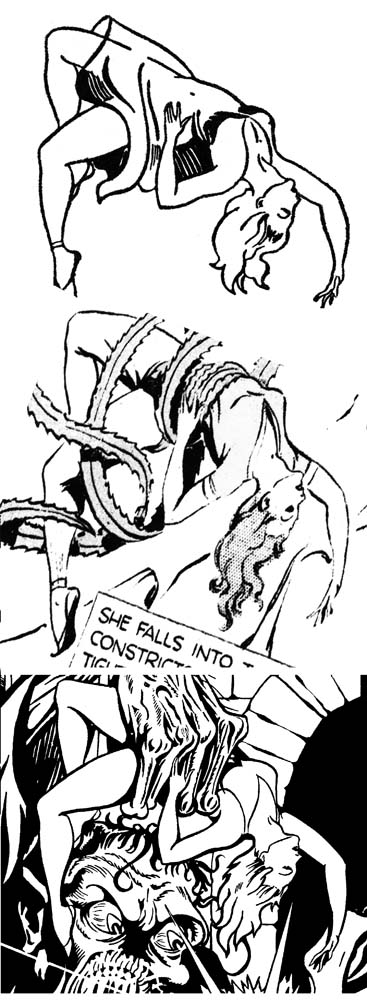
Blue Bolt #1 (June 1940) art by Joe Simon
Flash Gordon (February 4, 1934) art by Alex Raymond
Silver Streak #2 (January 1940) art by Joe Simon
AgainI have matched the original and the two swipes as closely as possible. While sharing some even rather small details the two Simon images are not exact copies of the Raymond original.
Flash Gordon is once again going to be reprinted this time by two publishers, IDW and Titan. IDW’s first volume is already out and Titan’s is scheduled for release in March. I am sure that many more sources for Simon’s swiping will be found in these volumes.
Footnotes:
* I find “swipe” to be an objectionable term because of the connotation of theft that it is based on. There is no similar expression in the fine arts where no one would describe Michelangelo’s Moses as being a swipe of Donatello’s St. John the Evangelist (as shown in Kirby Swipes from Simon). However the term swipe is so entrenched in discussions on comic books that it must be accepted.


